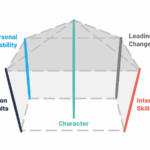It is a true joy to read about a leader who models influential leadership, utilizes the tools and resources available with purpose and patience, all while embracing his company’s culture of being both tough minded and tenderhearted.
A recent client company of mine was in “a pickle” (that might be a midwestern colloquialism) and brought me in to help work through their challenge. Their employees and leadership cared deeply for each other, the company, and their strategic vision. Sounds terrific, right?
Yes. And No.
Their desire to push forward their mission and vision resulted in long hours, an endless string of urgent projects, and a 24/7 mentality. They all liked each other so much, that no one wanted to get crosswise, hurt feelings, or name the looming elephant in the room of “We are burned out and we’re doing it to ourselves.”
As I coached the leadership team one item became clear to everyone. As much as they aspirationally talked about changing their behaviors, they were uncomfortable holding each other and themselves accountable to living, breathing, owning the changes.
Enter the Campbell’s Soup turnaround story, under CEO and President Doug Conant’s leadership, beginning in 2001. He walked into a company in steep decline but held true to his core beliefs in task excellence combined with relationship excellence. In short, the art and science of tough mindedness + tender heartedness.
But wait! There’s more!
Conant knew there needed to be a glue holding this formula together. That glue turned out to be measured accountability, at all levels. (Link to article: https://www.connectionculture.com/post/campbells-turnaround-recipe-measure-work-culture-and-hold-leaders-accountable
Backed with tools like Gallup’s Q12, a robust training strategy, leadership coaching, and a rigorous feedback system, Conant shifted the culture and the bottom line. He led with the data, follow-through, trust and patience in the strategy, and clear communications with employees.
Armed with the Campbells’ story, I connected with my client group and we drew parallels between the organizations. It was magic in a bottle. Within an hour we had a short list (3 items) of behaviors the team wanted to change immediately. For accountability, the team agreed to use a communication model based on a deep, core fundamental principle of this team – care. Tender-heartedness. When the accountability is based on mutual understanding and shared vision, it’s easy to get on the same page
What Conant did looks fundamental on the surface. We know these systems and tools work, yet we don’t trust them. Why not? How can you take Conant’s example and put it into practice?







